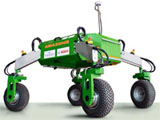Agricultural and Biological Systems Engineering, Department of

Department of Agricultural and Biological Systems Engineering: Faculty Publications
Document Type
Article
Date of this Version
2025
Citation
Journal of Environmental Engineering (2025) 151(3): 04025004
Abstract
In an inductive metastudy, we investigated the effects of varying rates of overland sheet flow on the transport of phosphorus (P) and nitrogen (N) from sites containing beef cattle manure. The analyzed data were collected during previously reported field rainfall simulation investigations conducted on cropland sites and a beef cattle feedlot in the US state of Nebraska. During the experiments, inflow was incrementally added to the top of the experimental plots to simulate runoff rates occurring at greater downslope distances. Runoff rates on the experimental plots ranged from 2.9 to 22.9 Lmin−1, and the maximum equivalent downslope distances varied from 5.3 to 42.3 m. The findings revealed that P and N transport rates increased linearly with runoff rate on sites where N was applied at rates ≤ 151 kgha−1 (Condition 1). Nutrient transport rates were influenced by the quantity of nutrients released to overland flow and the amount of runoff available to transport these nutrients. Interestingly, on sites where N was added at rates > 151 kgha−1 (Condition 2) and on beef cattle feedlots (Condition 3), maximum transport rates for P were not affected by runoff rate, but N transport rates again increased linearly with runoff rate. The following hypotheses were formulated: Hypothesis 1 states that P transport rates can be directly related to runoff rates for Condition 1; Hypothesis 2 states that for Condition 2, the maximum rate at which beef cattle manure can release P to overland flow can be estimated from the P content of the applied manure; and Hypothesis 3 states that transport rates for total N can be directly related to runoff rates for Conditions 1, 2, and 3. Hypothesis testing using the student’s t-test affirmed each hypothesis. However, further assessment of these hypotheses is needed at other field sites with varying soil, cropping, and management conditions.
Included in
Bioresource and Agricultural Engineering Commons, Environmental Engineering Commons, Other Civil and Environmental Engineering Commons


Comments
United States government work